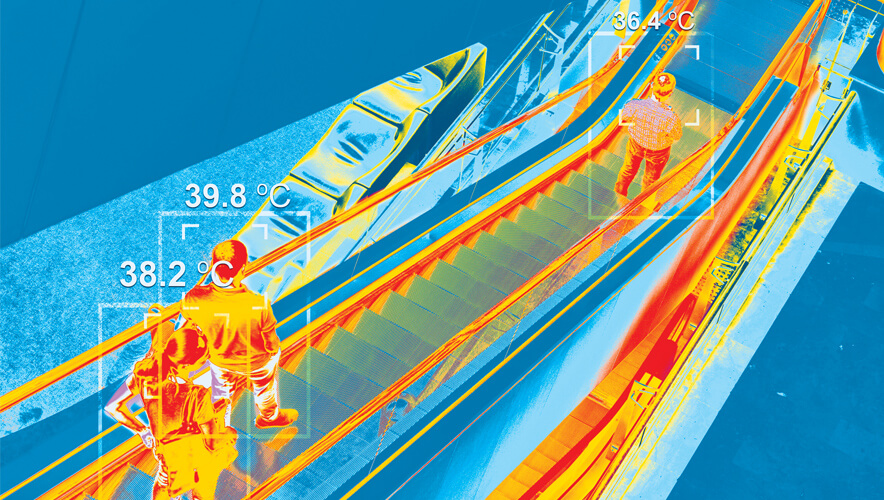Thermal Cameras Will Help Facilities Reopen in a COVID-19 World
Thermal imaging camera systems have generated a lot of hype in terms of the pivotal role this technology can play in organizational reopening strategies during the COVID-19 pandemic.
Casinos, retailers, and manufacturing facilities have been among the first to invest in and deploy this solution, helping them proactively detect an elevated temperature in visitors or employees prior to entry.
More businesses are expected to follow suit in the coming weeks and months as they look for additional measures—along with social distancing, sanitation procedures, and occupancy limitations—to reduce the spread of COVID-19 and safely reopen.
Thermal imaging camera systems with a blackbody temperature calibration device offer a more accurate solution that also provides a higher throughput of people for scanning, as well as the ability to monitor and manage alerts locally and remotely. They also integrate with other technologies such as turnstiles, physical access control systems, and intrusion devices.
The combination makes this type of solution ideal for facilities that require a first line of defense in high traffic areas or when rapid people flow is essential—commercial office buildings during morning rush hour, transit solutions, or manufacturing plants during shift changes.
Systems that incorporate a blackbody device typically employ a dual sensor camera, which has a visual sensor and a thermal sensor built into the camera, along with a separate blackbody device. The blackbody device is an integral part of thermal imaging as it relates to detecting elevated skin temperature scanning because it provides the ongoing calibration of the infrared temperature sensor for a higher degree of accuracy.
Throughput is also an important consideration for businesses to consider. Achieving throughput—through a turnstile or a main entry door with card reader—requires one person at a time be able to walk through without stopping. It's important to know what the specific requirements are for each system to obtain the highest level of accuracy and maintain proper resolutions with a thermal imaging camera system. Even the most accurate systems can likely only process 15 people per minute and still achieve medical grade accuracy in line with IEC 80601-2-59:2017 standards when using compliant devices that are properly installed.
While most users will deploy a thermal solution with local monitoring, alerting, and response, some systems also feature integrations with video management systems (VMS) for remote monitoring and management. VMS integration can also be a valuable tool for automated contagion reporting for contact tracing, controlling access through the VMS and PACS integration and activating an organization’s event response protocols.
For local monitoring and response, some thermal imaging cameras may include a built-in speaker for configurable audible alerts. The audible notification can announce that a temperature alert has been detected and instruct an individual to proceed to a second scanning area or to stay in place while the personnel respond.
Installing thermal imaging cameras for scanning elevated temperatures will soon become the new normal as more and more companies migrate back to the workplace. Businesses should follow best practices and comply with standards for the installation, deployment, and usage of these devices to achieve success and accuracy in elevated skin temperature scanning.
Jason Ouellette is head of technology business development for Johnson Controls.
